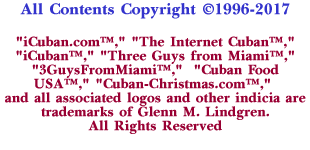By Tony Mendoza and Glenn M. Lindgren

La Sagüesera -- the name is a "Cubanization" of the word "southwest" that also evokes memories of a town with a similar sounding name in Cuba -- was a section of Miami settled by the first wave of arriving Cubans. Bordered by Flagler on the north, Coral Way on the south, 27th Avenue on the west and the Miami River on the east, this urban area had experienced a depression in the 1950s as both people and businesses moved to the suburbs south and west of the city. The empty storefronts, cheap rental apartments, and bungalows that one could have for a song, proved a great attraction for cash-strapped Cubans.
Walk with us as we take a trip down a street that today only lives in memory:
The immense red brick Firestone Building flanks the corner of Flagler and 12th with its huge neon sign atop a terracotta tile roof, an impressive landmark in this time before the skyscrapers invaded Miami. Cars and trucks fill the service bays at Firestone. The pumps at the nearby art deco Gulf Station also do a brisk business with attendants who fill the tank, check the oil, and wash all the windows.
Here on the corner, Cubans taste their first American hamburger at Royal Castle. At ten cents a pop, they are the original "value meal." The San Juan Bosco church sits a block to the west on Flagler and 13th. Built in a converted garage, the boxy structure is the first church that many Cubans attend in exile. The church provides not only spiritual comfort, but also material comforts to people who land in America with barely the clothes on their backs. On Sundays, the church's six masses, five conducted entirely in Spanish, are packed with new arrivals.

A mixed collection of establishments, all catering to Cuban tastes, lines both sides of the northern flank of Flagler. The Havana-Miami Restaurant offers inexpensive criollo cooking and Cuban sandwiches in an air-conditioned dining room that features spotless, plastic-covered tables.
At El Oso Blanco, a typical Cuban market, the floor is crowded with island fruits, vegetables, beans, and tubers displayed in large wooden barrels. Watch your step as we navigate the maze of barrels to the back of the store where a cigar-chomping Cuban butcher slices thin palomilla steaks and runs a steady stream of beef through the grinder for picadillo. Earthy smells of yuca and boniato, the sweet aroma of ripe mango and papaya, and a whiff of brewing Cuban coffee make a trip to El Oso Blanco a festival for the nose. Listen to the loud Cuban music and the din of two dozen Cubans talking at the same time: now you are enjoying a real Cuban shopping experience!

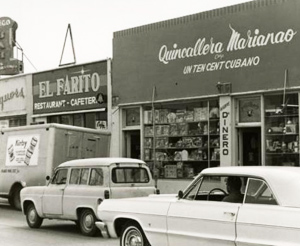
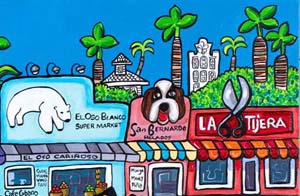
Look in the smoke-stained windows of the local cigar store and see Cuban cigar makers rolling Cuban seed tobacco by hand, their tanned and weathered skin matching the brownness of the leaf as they cut and roll cigar after cigar in an orchestrated dance.
Here and there, small cafes serve tiny cups of strong Cuban coffee to the talkative masses, and do they talk! Crowded around the walk-up windows, the locals gather in an impromptu street party to argue about baseball and politics between sips of hot Cuban coffee.
Helados San Bernardo is the neighborhood ice cream shop with tubs of tropical fruit ice creams: mango, coconut, papaya, mamey, guava, and pineapple are popular. Step up to the counter and order canoas, canoes or long sundae dishes, and ensaladas, five-scoop monsters filled with your favorite tropical flavors and toppings. Decorated in light blues and an ocean of orange Formica, on Sundays Helados San Bernardo is jam packed with loud parents and their chattering children, here to collect their reward for good church behavior.
La Tijera (the scissor) ostensibly sells sewing supplies, but step inside this cavernous, dark and dusty shop and discover what is really a Cuban general store. Here you can buy anything you need to equip your New World home. The shelves are stacked with everything from thimbles to Italian coffee pots, pressure cookers, curtains, and household goods. Pick up a cheap set of everyday dishes. They feature classic Spanish designs crafted by Taiwanese factory workers. La Tijera displays them in their flimsy brown cardboard shipping containers, still bearing Custom's stamps from the port of Miami. One corner of the store includes a selection of taburetes, rustic leather-covered chairs, and Cuban-style rockers.
It is evening now, and riffs of classic Cuban salsa music dominate the sounds of the street. Take a deep breath and inhale the aroma of the holy trinity of Cuban food: onions, garlic, and green pepper carried from the backs of restaurants by swift, sea-scented breezes. The local jewelry stores are closing up shop, and patrons hurry to make last-minute purchases of gold medallions representing the most popular saints and the ubiquitous gold chains that are popular with both Cuban men and women.
Sadly, this world ended when a large fire destroyed several businesses along Flagler and 12th in the mid 1970s. Over time, the Cuban cultural base shifted to Calle Ocho, which became the main street of the entire area and now known as "Little Havana."
Even though many people still refer to Little Havana fondly as "La Sagüesera," long-time Miami Cubans still talk about the original quintessential Cuban neighborhood once centered on Flagler and now only a memory.
From the book, "Miami Lost–Miami Found: The Cuban Culture of Miami Then and Now" (Unpublished.)
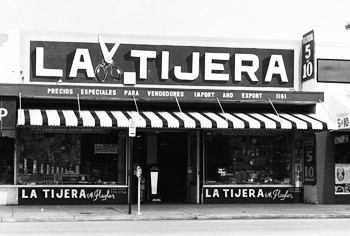
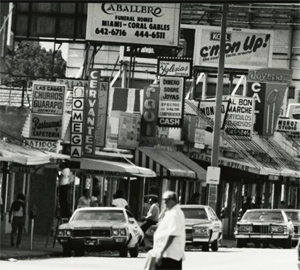
Drinks | Appetizers | Salads | Main Dishes
Soups | Side Dishes | Desserts | Index
Cuban, Spanish, and Latin American food recipes, Miami/Little Havana Travel Guide, Miami Restaurant Guide, Hispanic Culture & Food
